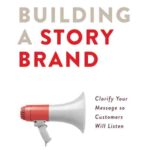In the world of small business sales, there are two primary approaches to sales: inbound and outbound. While both aim to drive revenue for a company, the strategies and tactics used for each approach can vary significantly. Understanding the differences between inbound and outbound sales can help businesses determine which approach best suits their needs and develop effective sales strategies to achieve their goals.
The primary difference is that outbound sales deal with potential customers, while inbound sales deal with prospects.
A potential customer is someone who could, in principle, become a customer. Most often, they simply meet some set of predetermined criteria. For example, if you sell cars, anyone with enough money is your potential customer.
A prospect is a potential customer who has been qualified as fitting certain criteria. Prospects fit your target market, have the means to buy your product or services, and are authorized to make buying decisions. For example, if you sell cars, anyone looking to replace their car and who has enough money is your potential customer.
Outbound Sales
Outbound sales are the more traditional of the two sales approaches. As the name implies, outbound sales involve actively seeking out potential customers through cold calling, emailing, or other forms of outreach. In outbound sales, salespeople make first contact with potential customers and engage with them to deliver a sales pitch.
Outbound sales are a way of going directly to your market and pitching your product. It’s the best choice for businesses wanting to generate quick wins and grow their customer base fast. However, the tradeoff is that outbound sales typically cost more than inbound sales, as many tactics involve renting access to someone else’s audience to reach your potential customer.
Related posts: 6 Powerful Marketing Channels That Rent You Access to Prospects and 6 More Powerful Marketing Channels That Rent You Access to Prospects
Outbound sales are often considered an interruption for the potential customer and can tarnish a brand if overdone. Below are three examples of outbound sales tactics:
Outbound Email
An outbound email is an unsolicited, yet targeted email sent to a potential customer. It is one of the most common forms of outbound sales. The email’s goal is to capture a potential customer’s attention and includes a clear call to action to encourage a potential customer to book a face-to-face meeting or schedule a sales demo. Outbound emails are considered less invasive than cold calling since the potential customer can more easily ignore the email. While outbound emails effectively generate leads and drive sales, it is important to avoid spamming recipients, as this can damage the brand’s reputation.
Outbound email campaigns often involve a series of emails sent to a potential customer over a period of time, using automation software. Outbound emails can be tracked and analyzed to measure their effectiveness and optimize them. Outbound emails can also be personalized based on industry, company size, job title, or other relevant factors, making them more effective than generic mass emails.
Cold Calling
A cold call is an unsolicited phone call to potential customers who have not expressed any prior interest in a company’s products or services. The goal of cold calling is to introduce your company and its offerings, identify potential needs or pain points, and schedule a face-to-face meeting or sales demo.
To increase the effectiveness of cold calling, salespeople should research the potential customer beforehand and tailor the messaging to their specific needs. People buy products from people they know, like, and trust, and there’s no better way to build trust than to be part of the person’s “We Group.” A we group is an organization or some affinity the potential customer may have with you. A tool I recommend to find a potential customer’s we group is the LifeStyle Database in Data Axle, offered at many public libraries.
Cold calling often involves using a script honed over time to avoid being hung up on repeatedly. Cold calling can be time-consuming and may result in a high rejection rate, but it can also be a valuable tool for generating leads and filling the sales pipeline. Most potential customers consider cold calling an invasion of their time and may come to resent the brand if it is used indiscriminately.
Social Selling
Social selling leverages the power of social media platforms to engage with potential customers, build relationships, and ultimately, drive sales. Social selling involves a more personalized approach. Salespeople connect with potential customers on social media and offer relevant and helpful content and insight. They become a prospect by building trust and establishing a rapport through social media interactions with a potential customer.
Outbound Sales Pros and Cons
Here are four potential benefits of using outbound sales tactics:
Proactive: Outbound sales are a proactive approach to reaching potential customers, which can help small businesses expand their reach and generate new business opportunities. This approach allows salespeople to take the initiative to identify and engage with potential customers rather than waiting for them to come to the company.
Immediate Feedback: Outbound sales provide immediate feedback on the effectiveness of a sales approach. Salespeople can quickly learn which messages and tactics resonate with potential customers and adjust their approach accordingly.
Can Target Specific Audiences: Outbound sales allow companies to target specific audiences or industries likely to be interested in their products or services. This allows salespeople to focus their efforts on high-potential customers rather than casting a wide net and hoping for the best.
Can be Highly Personalized: Outbound sales can be highly personalized when done correctly. By researching potential customers and tailoring communications to their specific needs and pain points, salespeople can build relationships and increase the likelihood of conversion. This approach can help to create a positive experience for potential customers and prospects and builds brand loyalty.
On the flip side, here are six potential challenges of using outbound sales tactics:
- Intrusive: Outbound sales tactics, such as cold calling or unsolicited emails, can be perceived as intrusive by potential customers, which can lead to negative associations with the brand and a reluctance to engage with the company in the future.
- Low Conversion Rates: Outbound sales tend to have lower conversion rates than inbound tactics because they often involve reaching out to potential customers who have not yet expressed any interest in the company’s offerings. This means that salespeople may need to reach out to many potential customers to achieve a small number of sales.
- Requires a High Volume of Leads: Outbound sales rely on reaching out to a high volume of leads to generate enough interest to convert a few into customers. This means that companies may need to invest more heavily in lead-generation strategies to support their outbound sales efforts.
- Limited Personalization: Outbound sales often involve reaching out to many potential customers, which can limit the level of personalization a salesperson can provide. This can result in generic or impersonal communications that fail to connect with potential customers on a deeper level.
- Rejection: Outbound sales involve reaching out to potential customers who may not be interested in the product or service offered. This can lead to a high rate of rejection and can be discouraging for salespeople.
- Time-Consuming: Outbound sales can be very time-consuming, as it involves reaching out to many potential customers and following up with them until they make a purchase decision. This can take a lot of time and effort and may not always result in successful sales. According to industry facts reported by Salestrail, salespeople need to make, on average, 6 to 8 calls to have a successful cold call conversion and, on average, 18 attempts to connect and convert a lead into a qualified opportunity.
Inbound Sales
As the name suggests, inbound sales is an approach used as a lead generation strategy that focuses on providing prospects with value before pitching them on your product or service. Unlike outbound sales, which are cold, inbound sales represent warm leads. While outbound sales deal with potential customers, inbound sales deal with prospects. Inbound sales are the opposite of prospecting, as the prospect initiates the first contact. Inbound sales focus on converting leads who have been attracted to and interacted with your inbound marketing. Later, the salesperson reaches out to the prospect to continue nurturing the lead.
Marketing campaigns draw in inbound sales prospects. This can be content published on a blog or other lead source channel designed to attract prospects.
Related Posts: 5 Helpful Content Marketing Ideas to Attract New Customers and 5 More Helpful Content Marketing Ideas to Attract New Customers
Because the aim of inbound sales is to draw people in, it’s essential to ensure that your content is valuable and engaging and that your brand is easily discoverable online.
Once a potential customer engages with your content and provides their contact information, they become a prospect. The salesperson then reaches out to the prospect to learn more about their needs to ascertain if they are a good fit for their product or service. Inbound sales tactics include face-to-face conversations, demos, and other forms of personalized outreach to help prospects move through the sales process. Inbound sales use a more personalized and consultative approach to build trust with the prospect and determine how their product can best solve the customer’s pain points.
The main focus of inbound marketing for lead generation is to help clients rather than sell to them, to build trust in your brand. You must reach prospects early in the decision-making process to help them define and research a solution to influence their decision.
Inbound Sales Pros and Cons
Here are four potential benefits of using inbound sales tactics:
- Increased Efficiency: Inbound sales tend to be more efficient than outbound tactics because they focus on engaging with prospects who have already shown interest in a company’s offerings. This means salespeople can prioritize their time and resources on the most promising prospects rather than wasting time on unqualified prospects.
- Improved Conversion Rates: Inbound sales are typically more effective at converting prospects into customers because they are based on building relationships and providing personalized solutions that meet the specific needs of each prospect. By focusing on the prospect’s pain points and providing helpful information, salespeople can build trust and credibility, making it more likely that the prospect will choose to become a customer.
- Enhanced Customer Experience: Inbound sales are designed to create a positive customer experience by providing personalized solutions that meet the prospect’s unique needs. By focusing on the prospect’s pain points and providing helpful information and resources, salespeople can show that they are working on delivering value and building long-term relationships.
- Higher Quality Leads: Inbound sales tend to generate higher quality leads than outbound tactics because they focus on attracting prospects who have already expressed interest in a company’s offerings. This means the prospects are more likely to be qualified, engaged, and ready to make a purchasing decision, resulting in a higher likelihood of success for the sales team.
On the flip side, here are four potential challenges of using inbound sales tactics:
- Time-Consuming: Inbound sales can be time-consuming because they require creating valuable content and building relationships with prospects over time. This means that sales and marketing people may need to invest more time and resources in the early stages of the sales cycle before seeing a return on investment (ROI).
- Requires Strong Marketing: Inbound sales rely heavily on marketing efforts to attract leads and build brand awareness. This means that companies without a strong marketing strategy may struggle to generate enough prospects to support their sales efforts.
- May Not Reach All Potential Customers: Inbound sales are based on attracting leads who are actively seeking information about a company’s products or services. This means that there may be prospects who are not familiar with the company or actively seeking information and therefore cannot be reached through inbound sales tactics alone.
- Can Be Challenging to Measure ROI: Inbound sales can be challenging to measure in terms of ROI because they often involve a longer sales cycle and multiple touchpoints with prospects. This means that it may be difficult to attribute a specific sale to a particular inbound sales tactic or effort.
In conclusion, inbound and outbound sales are two distinct approaches to driving revenue for a small business. Outbound sales involve actively seeking out potential customers through email outreach, cold calling, or social selling. Inbound sales, in contrast, focus on identifying and engaging with prospects who have already shown interest in a company’s products or services. While both strategies have their benefits and drawbacks, the choice of approach depends on your company’s goals, target audience, and resources. By understanding the differences between inbound and outbound sales, small businesses can develop effective sales strategies that align with their unique needs and priorities, and ultimately drive success in today’s competitive business landscape.
How will you use outbound and inbound sales in your small business?












